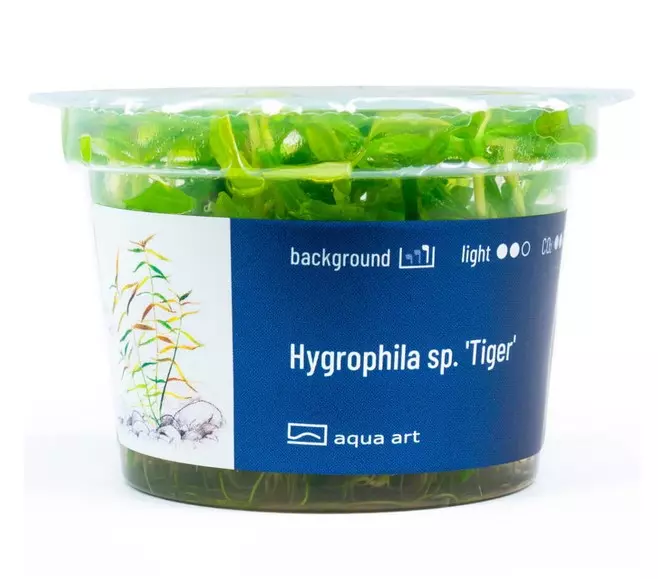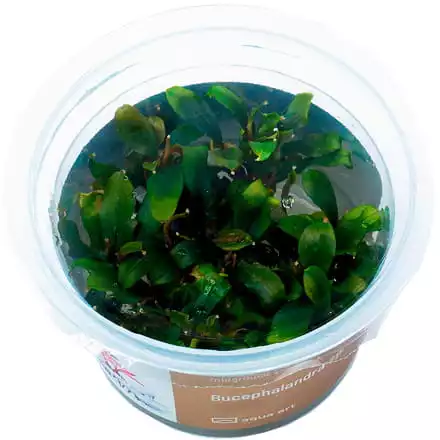Product information "Hygrophila sp. 'Tiger"
Hygrophila sp. Tiger is a decorative plant with narrow, red colored leaves. It grows rather tall, making it suitable for the second or third level of an aquarium.
- Difficulty of growing: easy
- Light requirement: medium
- CO₂ requirement: moderate
- Height of mature plant: up to 40 cm
- Growth rate: Fast
- Temperature: 20-30°C
- Placement in aquarium: third and second levels
- Origin: Asia
- 6 cm cup diameter
Hygrophila sp. 'Tiger' is a decorative aquatic plant that belongs to the Acanthaceae or acanthus family. The species gets its name from the interesting markings on the leaves, which can be reddish brown or brownish green depending on the light intensity in the aquarium. A pronounced marbled pattern can be seen on the upper surface of the leaves. The exact origin of the plant is not entirely clear, it is a variety that is relatively new to aquaristics and probably originated in Asia.
The habit of this plant is very similar to Hygrophila polysperma, both also show similar requirements and grow about the same size. Hygrophila sp. Tiger is an easy to care for plant, so it is recommended for beginners in aquaristics.
It is a narrow-leaved, tall-growing stem plant that tolerates a very wide range of aquarium conditions.It has no special requirements for pH or water hardness. It tolerates a temperature of 20 to 30 °C.
With good light conditions and an adequate supply of macro and micro elements, you can be sure that this plant will color impressively. It will look spectacular and provide a red background for the other species in the tank. If conditions are favorable for the plant, it will maintain a compact growth and take on the appearance of an underwater minibush. In order for Hygrophila to continue to spread, it can be pruned regularly.
Planting: The plant must be removed from the cup and thoroughly rinsed from the gel under running water. This is best done by placing the plant in a container of lukewarm water. Most of the gel will then fall off by itself. Divide the contents of the cup into 1-2 cm lumps and then place them at a small distance on the selected items
.






























